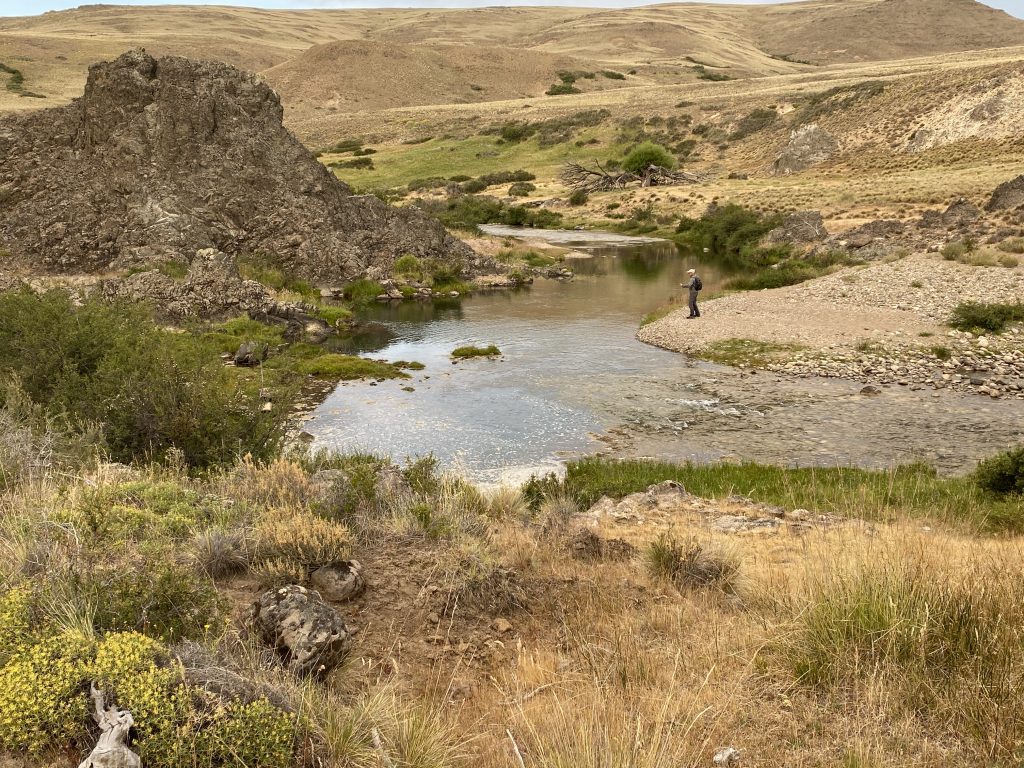Fishing Beneath Condors (or Why do we have to pay to keep water in rivers?)
Image: Andean condor soaring over Torres del Paine, Chile. photo by Brian Richter
__________________________
I’ve just returned from three glorious weeks in Patagonia. We did some spectacular mountain hiking in Torres del Paine (Chile) with friends. We got up close and personal with massive glaciers that – for the time being – remain dynamically stable and awe-inspiring as they groan and kersplash! in thunderous calving of icebergs.
The highlight for me was fly-fishing in spring creeks flowing from the Patagonian steppe with gigantic Andean condors circling overhead. I grew up in southern California and was there when the last 27 California condors were brought into captivity, thereby marking the bird’s extinction in the wild and foreshadowing the end of the genus Gymnogyps. Thankfully, through a remarkable recovery program, the bird was reintroduced into the California skies and now numbers nearly 500 individuals.
To see so many wild condors flying high over Patagonia was thrilling. The Andean condor belongs to the genus Vultur (and it looks it!). With an 11-foot wingspan, it is the largest flying bird on the planet. The constantly-howling winds of Patagonia provide plenty of lift for the bird’s playful soaring.

Image: Fishing the Pichi Lefue in the Patagonia steppe. Photo by Brian Richter
While fishing, my Chilean guide asked what I do for a living. I told him I’d led The Nature Conservancy’s global water program for three decades but I was now focused pretty exclusively on trying to restore environmental water flows in rivers. I explained to him that in many places we have to raise money to purchase somebody else’s water rights so that we can leave their water in the river (this is as relevant in Chile as it is in the American West).
His reaction was one that I’ve seen many, many times during my career. “Why in the world do you have to pay for water that belongs in the river?!” he asked.
He went on indignantly exclaiming that people shouldn’t be allowed to take so much water from a river, and that the river and the fish have rights too!
I not only sympathize with these sentiments but they lie at the core of my own value system. I consider it immoral that we have pushed ancient species like the Colorado pikeminnow or races of migratory salmon to the brink of extinction by drying up their riverine habitats.
I have counseled and assisted conservation organizations around the world in their efforts to get water policies in place that will help proactively protect environmental flows……..in rivers that have only been lightly exploited to date. Fortunately, two-thirds of the planet’s rivers have been only lightly tapped to date.
But it is a completely different challenge to put water back into rivers once they have been over-exploited. Once people start using the water from a river for drinking or farming, they become extremely reluctant to give it up. And it is exceedingly rare to find a politician willing to change the status quo by dialing back water use, even when everyone agrees that it wasn’t smart to allow all of the river to become allocated and consumed (Australia is one extraordinary exception with the Murray-Darling Basin Plan, but it has been hotly controversial since adopted in 2012).
After more than 30 years of advocating for environmental water policies, I have become a pragmatist. We should always keep advocating for improved legislative protections for river flows, but I’m not willing to wait forever. That’s why I became a fan, and an advocate, for water markets and the ability to buy back water from willing sellers that no longer need all of their water rights. It’s also why I continue to advocate for paying farmers to fallow some portion of their farmland as a means for reducing water scarcity and refilling reservoirs in the Colorado River basin, or refilling depleted aquifers in California.
There are many reasons to be cautious, or even skeptical, of water trading or water markets. They have to be designed carefully and equitably, and they have to be governed well. But a good market is a powerful driver for improving water efficiencies and conserving water. And in many places it’s the only strategy available for giving fish the water they need.


Thanks for the post, Brian, especially the consideration of morality and water “rights.”
Perhaps your next blog post can be about the success, for the rivers, of such water market and water buy-back programs? That would be very interesting and useful.
I do wish that such an analysis would be possible, Jeanmarie! However, my experience has revealed that very few flow restoration programs have conducted adequate monitoring to perform such an analysis. Chris Konrad and his co-authors did a very interesting analysis of “Large Scale Flow Experiments for Managing River Systems” back in 2011, but even while they looked at well-funded, big river programs, there still had not been sufficient monitoring conducted to be able to credibly evaluate the outcomes. That being said, fish need water. And we know that when we dry up habitats bad things happen. So there’s a very compelling argument to be made that most efforts to restore flows have the potential for benefitting ecological systems, and in most instances the local organizations or agencies facilitating such restoration have very good anecdotal evidence to guide their restoration designs (e.g., flow volume and timing needed).